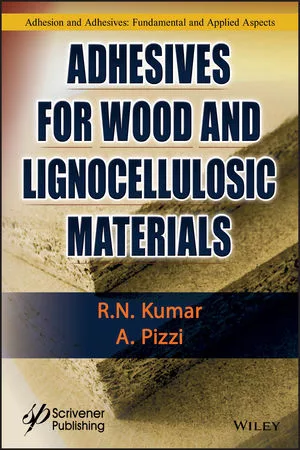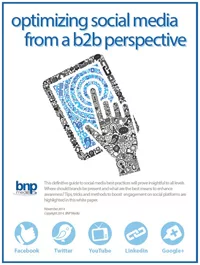A Unique Fungicide for Wood-Filled Plastic
The agrichemical, folpet, is shown to be an effective fungicide for use in a broad range of plastics including wood-filled plastics. Performance is evaluated through a tiered product development program utilizing: 1) Petri dish and environmental chamber accelerated laboratory testing of weathered samples and 2) the exterior exposure of panels or full-scale constructs (e.g., test decks). The action mechanism of folpet, a trichloro-methylthio-adduct, N-(trichloromethylthio)phthalimide, is discussed herein. The folpet active ingredient is additionally compounded into several physical forms that include resin and lubricant-pellet concentrates and granules for ease of processing into plastics and wood-filled plastic composites based on polyolefins, PVC and other resins. Data are presented that demonstrate protection from microbial defacement and deterioration at use-levels of 0.3 – 0.5% and treatment costs of cents per board-foot of composite without significant impact on physical properties. In addition, thermostability data for folpet and flexural properties of the finished wood plastic composite are presented. Air monitoring during extrusion operations shows that folpet-based products are easily handled safely in the work environment. A manufacturing case study is also presented.

Introduction
Folpet belongs to the trichloromethylsulfenyl class of fungicides originally discovered to be effective agrichemicals for the protection of crops, particularly soft fruits, from the growth of plant pathogenic fungi. Folpet is commonly used on hops, avocadoes and grapes. The molecular structure is shown in Figure 1.The folpet mode of action has been investigated primarily from the viewpoint of the plant pathologist.1-3 Investigations have centered on the mechanism(s) involved in the prevention of the growth of microorganisms that are harmful to plants. Many of these same microbes colonize architectural coatings and stains and flexible PVC plastics; subsequently, trichloromethylsulfenyl pesticides, in particular, folpet, have been found effective as industrial biocides for materials protection.
Initial mode-of-action studies led to the discovery that trichloromethylsulfenyl fungicides (such as folpet) are biological alkylating agents that react with thiols producing compounds that indicate that the primary reaction is the transfer of the trichloromethylsulfenyl group to the sulfur atom of a thiol.4,5 This has been demonstrated in vitro as well as in vivo.6,7 It is generally thought that the principal mode of action involves the reaction of the trichloromethylsulfenyl moiety with cell components containing the thiol functionality. Microbial enzymes are denatured and normal cell division is inhibited.8 The possibility that thiophosgene is a transcient intermediate has been proposed.9
The toxicity of folpet might directly or indirectly result from oxidative stress. Induction of antioxidative enzymes has been reported in several studies that show increase in production of reactive oxidative species in cells.10 Folpet is also described as a potent inhibitor of spore germination by affecting cellular processes required for germination or interfering with respiration.11 To date, the mode of action of folpet has not been fully elucidated.
Folpet is effective in organic solvent-based architectural coatings and stains and flexible PVC plastics for the prevention of fungal organism growth and staining by filamentous bacteria. It is active against mildew and wood-rot fungi. The minimum inhibitory concentrations (MICs) presented in Table 1 illustrate the spectrum of activity of folpet. Based on the proven fungicidal activity in plastics and coating formulations and its broad spectrum of antimicrobial activity, folpet was chosen as a candidate for evaluation in the wood plastic composite matrix.

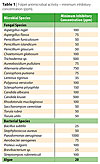
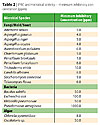

Biological Testing
First TierA tiered evaluation program was used to evaluate the candidate biocides. The first tier of the biocide screen was an accelerated laboratory evaluation in wood plastic matrix in the presence of nutrients. The purpose of this evaluation was to demonstrate activity in the matrix and to establish starting-point use-level ranges for higher tier testing. In addition, the thermal stability of each biocide was evaluated in a Brabender Plasticorder at temperatures and dwell times that simulated process conditions typical of industry extrusion operations.
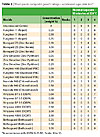
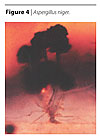
Second Tier
Accelerated testing that included simulated weathering and continuous airborne inoculation in a humidity chamber was used to more closely model exterior exposure and further characterize the performance of the candidate biocides. Test panels, about 5 cm wide x 15 cm long x 0.5 cm thick, were placed in an environmental chamber and tested in accordance with ASTM D 3273 and D 3274.
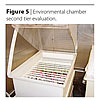
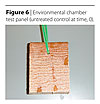





Test panels, about 5 cm wide x 15 cm in length and 0.5 cm in thickness, were exposed on test fences at an orientation of south 45 degrees in three mildew prone regions of the United States: New Jersey, Ohio and Southern Florida. The New Jersey and Ohio responses were closely similar and the data from the Piscataway, NJ site are presented in Table 5; folpet, at 0.3% by weight, demonstrated the best performance.

Figures 10 and 11 show the response of a concentration ladder of folpet and IPBC after about two years of test-fence exposure in New Jersey.

None of the biocides performed in the heavily stressed Southern Florida Everglades exposure. All failed at the concentrations tested in about six months.


Strength of Materials
Flexural PropertiesIn order to evaluate the effect, if any, of biocides on the physical properties of a composite, flexural strength was determined in accordance with ASTM D 6109-05, Flexural Properties of Unreinforced and Reinforced Plastic Lumber and Related Products. Modulus of elasticity and modulus of rupture were determined in the presence of lubricants and coupling agents. The results are presented in Table 7.

As part of this study, folpet compounded as pellets in resin compatible with HDPE and PP and in a lubricant concentrate was successfully processed into wood plastic composite deck board at plant scale. Often the pelletized and granular products are preferred forms in extrusion operations.
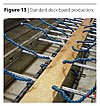
Manufacturing
Standard 5.25-inch extruded solid deck board has been produced with folpet at levels of 0.3-1.5 weight percent. A photograph of one of these operations is shown in Figure 13. For those wood composite manufacturers that are not familiar with handling pesticides, training regarding the safe handling of pesticides is available from the supplier.Conclusion
The tiered approach identified those biocides and use-level ranges required for satisfactory performance in the field. Ultimately, exterior exposure is required to determine duration of protection. Biocide content should be regionalized, if possible, to compensate for differences in climatic and biological stress (mildew susceptibility). Folpet is an excellent candidate for use in wood plastic composite for the prevention of surface defacement by mildew and perhaps wood-rot (soil contact tests are in progress). Starting point use-levels of 0.3 – 0.5% are recommended at treatment costs of about 3 to 5 cents per board-foot of standard deck board.Acknowledgments
Mr. Rick Mann, Kibbechem, Inc., Elkhart, Indiana; Dr. Karen Winkowski, International Specialty Products, Wayne, N.J.
Looking for a reprint of this article?
From high-res PDFs to custom plaques, order your copy today!





